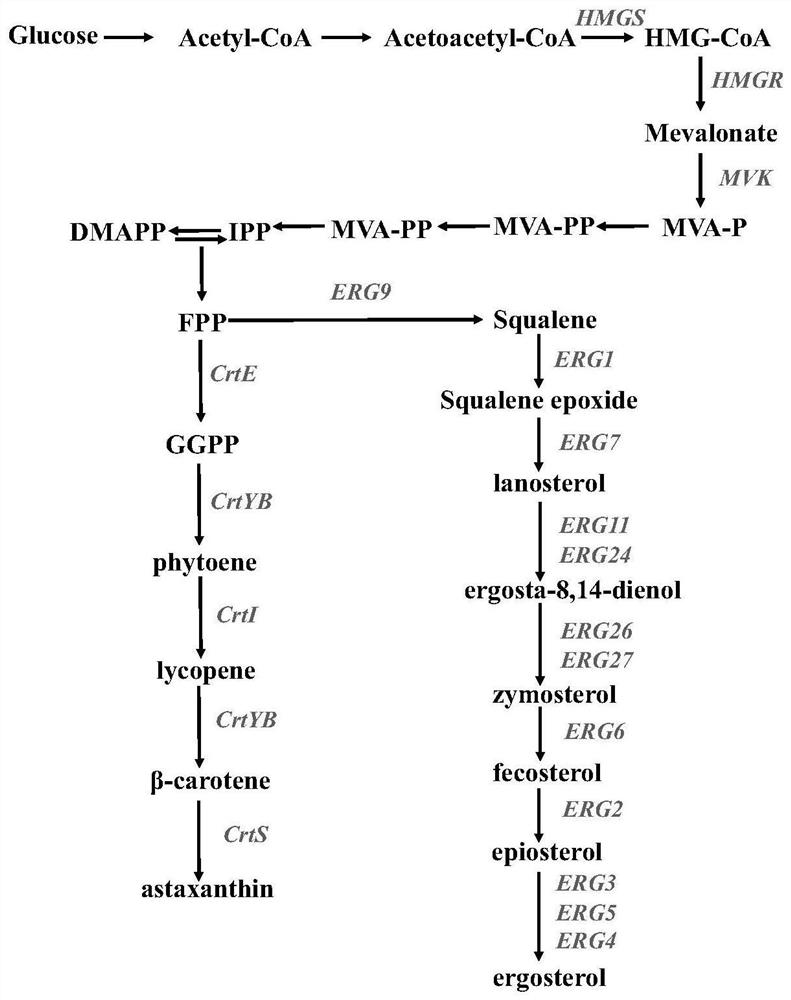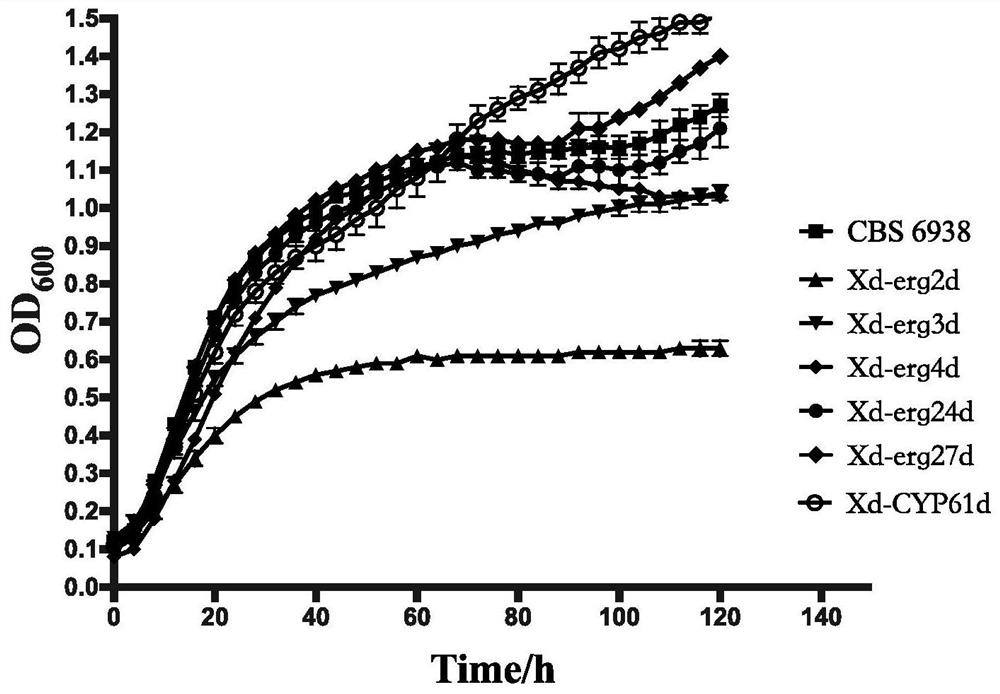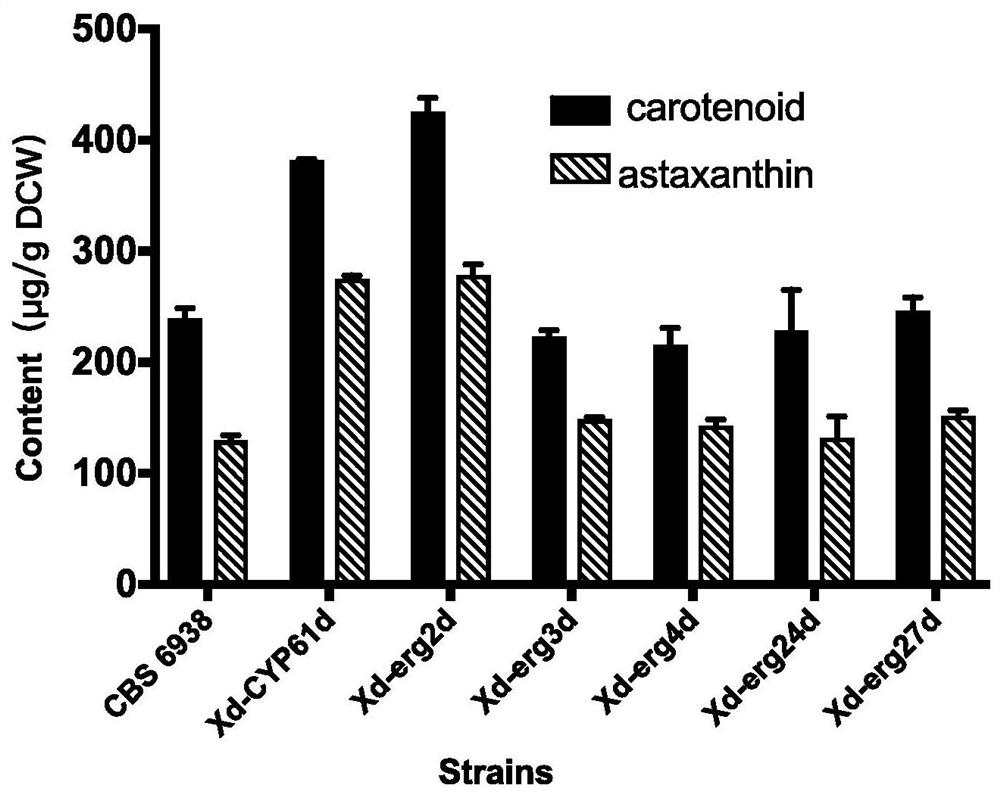Method for increasing yield of phaffia rhodozyma astaxanthin
A Phaffia rhodozyme and astaxanthin technology, applied in the biological field, can solve the problems of not fully revealing the method of astaxanthin production, and achieve the effects of reducing feedback inhibition, reducing metabolic competition, and improving metabolic flow and production
- Summary
- Abstract
- Description
- Claims
- Application Information
AI Technical Summary
Problems solved by technology
Method used
Image
Examples
Embodiment
[0043] 1. Materials and Methods
[0044] 1.1 Strains and culture conditions
[0045] Phaffia rhodozyme strain CBS 6938 (purchased from the Dutch CBS Culture Collection) was used as the material. Routine culture uses YPD liquid medium (glucose 20g / L, peptone 20g / L, yeast extract 10g / L), and the culture conditions are 22°C, 250rpm.
[0046] 1.2 Construction of gene knockout vector
[0047] All sterol synthesis genes were knocked out by homologous recombination, and the knocked out sterol synthesis genes had been annotated with corresponding enzymes in the GenBank genome database. In this example, except for CYP51 and CYP61, knockout vectors for other 10 genes as shown in Table 1 were constructed.
[0048] Table 1. GenBank ID of sterol synthesis genes and Scaffold
[0049]
[0050] The specific vector was constructed using the Gibson assembly method, and the DNA fragment was obtained by the PCR method, and the primers used are shown in Table 2. All PCR amplifications use ...
PUM
 Login to View More
Login to View More Abstract
Description
Claims
Application Information
 Login to View More
Login to View More - R&D
- Intellectual Property
- Life Sciences
- Materials
- Tech Scout
- Unparalleled Data Quality
- Higher Quality Content
- 60% Fewer Hallucinations
Browse by: Latest US Patents, China's latest patents, Technical Efficacy Thesaurus, Application Domain, Technology Topic, Popular Technical Reports.
© 2025 PatSnap. All rights reserved.Legal|Privacy policy|Modern Slavery Act Transparency Statement|Sitemap|About US| Contact US: help@patsnap.com



